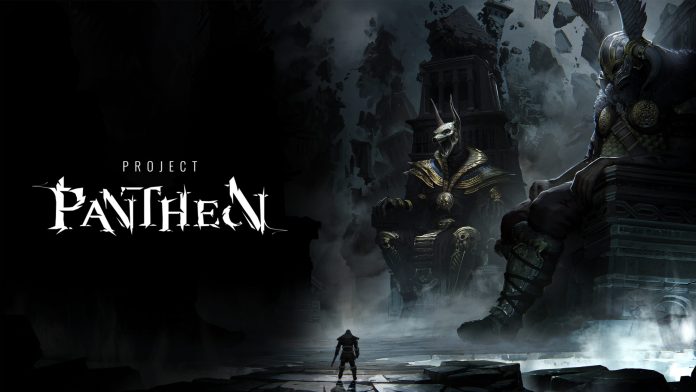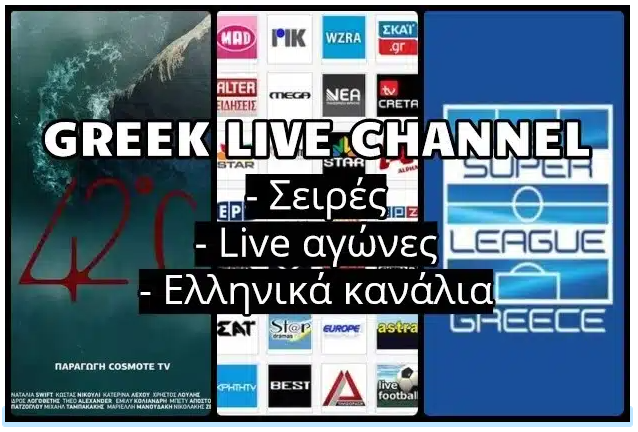A couple of projects I saw at Gamescom 20024 had their behind-closed-doors previews embargoed until a much later date, and one of them, a dark fantasy game called Project Pantheon, is now being revealed. It’s a blend of two highly popular genres: extraction and action RPGs. The latter is very familiar ground for the developer Wolcen Studio, a team known for the namesake game (formerly titled Umbra and crowdfunded via Kickstarter).
Powered by Unreal Engine 5 technology and targeting PC (there’s already a Steam page), Project Pantheon will soon enter public testing. A Closed Alpha Test is scheduled to take place on January 25-26 and February 1-2 for European and North American players, with servers that support other regions coming up in a few weeks.
At Gamescom, I met with Game Director Andrei Chirculete, who provided me with a thorough overview of the game and also answered several questions. Wolcen Studio currently has around 110 employees between France and Romania and they are working on three projects of various sizes. Project Pantheon is the one closest to release, with a targeted Q4 2025 early access launch window and the plan to employ a seasonal system with a new season coming roughly every four months. Find the transcription of our conversation below.
What was the original pitch for the game?
When we started working on this project, one of the most important things for us was building it as a live game. We will consider it successful if it’s still rather going strong in ten years from now on the market.
All the pillars we have here are in support of that. Right now, we’re working hard on the combat side. We want to get good, fluid combat, and then, of course, every feature and mechanic we are putting in the game needs to have replayability because we’re working on two fairly difficult genres. In both extraction and action RPGs, difficulty and progression systems are important to keep at the core of the game, and because we have a PvP component, we also need competitive systems. We have very strict anti-cheating stands. Last but not least, one big change for us as a company is that we are going forward with a community-driven development. When we started putting Project Pantheon together, the first thing we asked ourselves was, how do we make an MVP of this, put it in front of the community and start developing the game with that community?
What’s the world going to look like in Project Pantheon?
Instead of a classic fantasy setting, the game takes place in a post-apocalyptic universe where all the different mythologies coexist, but all the gods have been mysteriously wiped out. Death is our central character. He’s a cosmic entity that kind of picks up the pieces of a broken universe, and he recruits the players as his new Reapers. To get to the bottom of what happened, for one thing, but also helped him manage this situation, let’s say. Let’s have a look at that in the context of the extraction game. Death will give players a corner of his own universe as a base of operations, and that’s the safe space where players can try on different things. They have access to crafting and other functionalities.
Eventually, they can head out from there to different maps in different mythologies, such as Olympus, Valhalla, or something like that. The goal sgenerally will be to follow objectives, kill other players, and go through various PvE encounters (including some bosses), but ultimately, the goal is to survive and extract back into the sanctuary. If the players manage to do that, they get to keep everything they’ve accumulated along the way; if they don’t, they will lose what they’ve got, excluding the progression. The progression they get to keep, like, the quest progression.
The sanctuary is essentially a collection of buildings that you have to upgrade. Well, first, you have to build them, then operate them, and each one has a very distinct functionality attached. For example, storage space and crafting. There’s a playing area that allows the players to test their play style. There are also some passive bonuses, for example, when you respawn after dying, what kind of bonuses. There are even some aesthetic options, such as changing the lighting in your sanctuary. On the loop side, something we’re doing differently compared to traditional action RPGs is that we’ve moved a lot of what the playstyle means from the character to the gear that he is wearing.
You are what you wear. All the abilities, passive and active, come from the gear that the player is equipped with, and this feeds into a system related to the in-game economy, which we think is the secret sauce to extraction games. We believe you can’t really have a feeling of anxiety about losing an item or extracting with an item and being super happy about it unless that item actually holds value in the in-game economical model.
Can you talk about the art direction of Project Pantheon?
There are three main important pillars here: post-apocalyptic, grounded fantasy, and mythologies. On the post-apocalyptic side, we’re trying to build a fantasy post-apocalypse. Think Valhalla destroyed or Mount Olympus in ruins, not zombies or nuclear fallout or anything like that. On the grounded fantasy side, we are speaking to our roots with our fantasy, and we’re trying to really build everything by focusing on the logic of how the world ended up where it is. For each faction, we’re looking into how they reached a certain point, and of course, with each mythology, we’re looking at the technology level, what they would have access to in terms of armor, weaponry and so on.
On the mythology side of things, we’re going to start with Norse and Egyptian for early access and then adding Greek and Aztec throughout the early access. We will add more mythologies post-launch. Each mythology has several maps, about three, each with a unique boss attached to them. Each mythology also brings its own storyline and between fifty and sixty quests. Of course, some new, unique characters are introduced with each one.
There are between five and six factions for mythology, and then we have the items, which in my mind are the most important ones because we introduce about a hundred new items into Project Pantheon with each mythology, bringing more than a hundred abilities for the players to play with.
How important is customization going to be?
A lot. The sanctuary will be fully customizable. The playable character, of course, as well as stuff like armor and weapons.
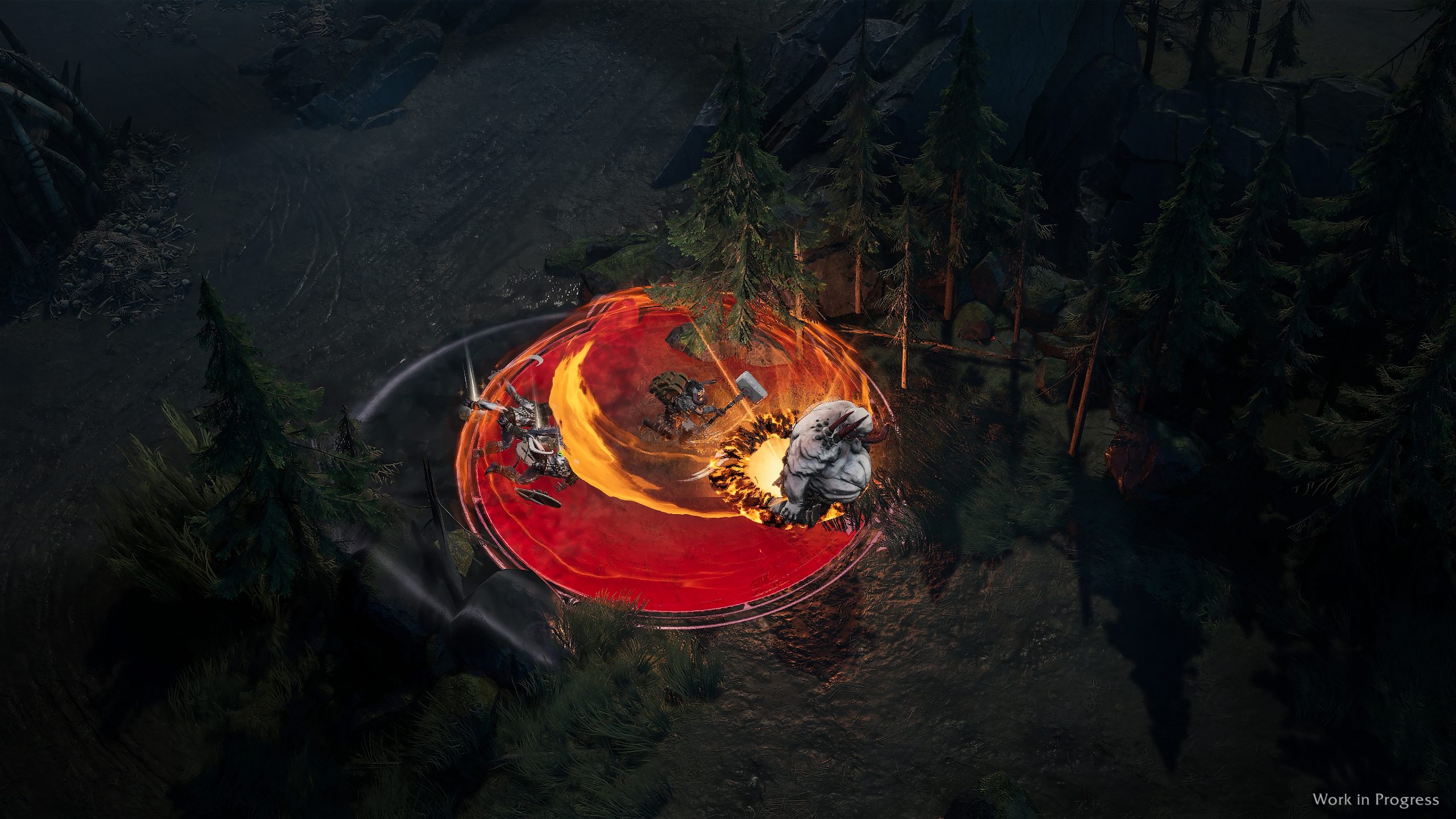
What does monetization look like in the game?
We’re building it as a free-to-play live service. First, we want to reach as wide an audience as possible, and more importantly, we want to avoid any kind of pay-to-win mechanics. That’s why we’re looking at customization options and selling them through traditional means like season passes and starter packs rather than selling any kind of advantage in the game.
We’re also investigating the subscription model. Take as an example Dota Plus, which gives players access to a bit of analytics about their own gameplay style without actually providing them with any kind of advantage.
Did you do some internal and external playtesting yet?
In terms of market validation, we conducted a couple of external playtests to figure out if we’re not crazy and that this game mode actually has some fans. We started out with North America and Europe, and we’ve done South Korean and a Southeast Asian playtest. In each case, we’ve had great results, with players engaged with the two in-game loops, albeit in different ways. The Western audience was more focused on the action RPG elements, whereas the Asian audience was more focused on the competitive side of things. That just reflects the different markets.
Where are you when it comes to progress?
We started this in February 2023 by conceptualizing the whole game. We then built a prototype until October 2023 and used that prototype for the market validation I was talking about earlier. Then we began production in April 2024. Now, we intend to have a cadence of at least two Closed Alpha tests every two months until we release the game on early access. The reasoning behind this is because of that pillar of community-driven development. We want to start forming that community.
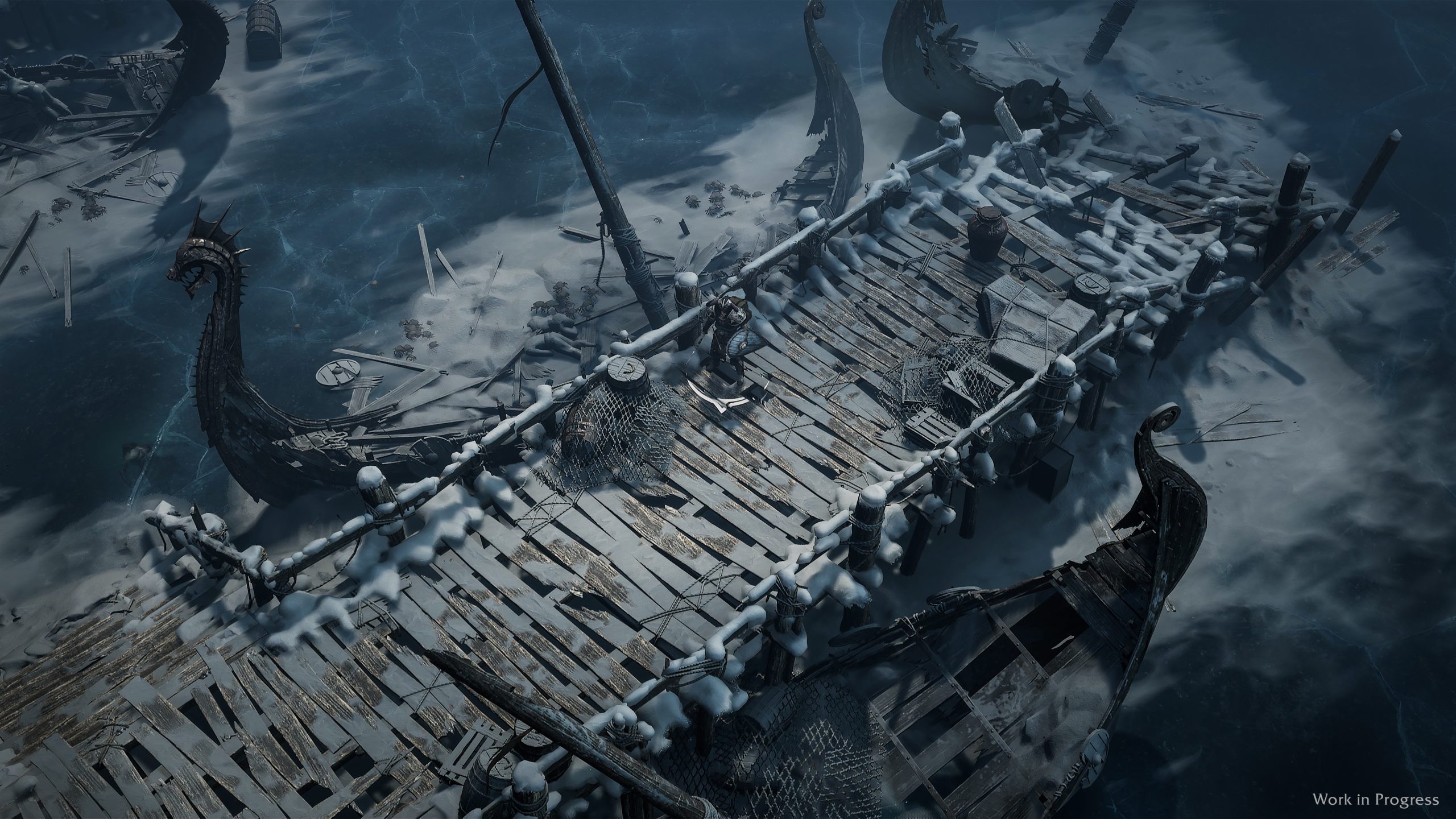
Is the map randomly generated in any way?
Originally, we tested having the map be randomly generated, and what we discovered was that extraction as a game mode lends itself to player knowledge. As a player, you want to gain knowledge and learn the map so that you can be efficient when you venture into a session. The randomly generated maps simply didn’t work very well, so we reverted to doing more traditional maps and then figuring out what elements we could randomize. For example, extraction spots are randomized.
There are some dungeons which sometimes might be there, sometimes might not. So we still have some randomization going on while you’re playing Project Pantheon, but yeah, as you’re going through it, you’re gonna encounter some PvE combat.
Eventually, after going through the monsters, you’re going to potentially run into some people. This obviously has a couple of choices. You can choose to stay and fight or just run away. We’ve seen all sorts of behaviors. The reason we like the extraction loop and why we chose it is because, unlike in the Battle Royale genre, this is a mode in which all the players can be winners. You can have multiple winners. Players could go in and fight it out, if they feel like it, but they don’t have to in order to reach their objectives.
We also believe strongly that there’s a lot of variety in playstyle with this type of game. You will have players who go in very fast, enter the map, get the job done and get out. You will have others who cherrypick everything. There’s no right way to play, we just want to give everyone the tools to play however they prefer. Some players are just going to stand by an extraction point and wait for players to go extract so that they can steal everything that they’ve got.
Is the amount of active skills finalized yet?
There are six active skills. We’ve made the weapon more impactful in the build, so your abilities are going to come from the weapon that you’re using. You also have a defensive option that comes from your boots, which will either provide you with a shield, a dash, or some other kind of defensive mechanic. We also have a special slot for an artifact item that gives you your ultimate ability. As I said earlier, the gear itself provides you with what you have as a playstyle. The armor also provides you with some passive abilities.
How does the extraction work in Project Pantheon?
You have to find one of these obelisks that spawn dynamically on the map, charge it up for a while, and then hold your ground type of situation.
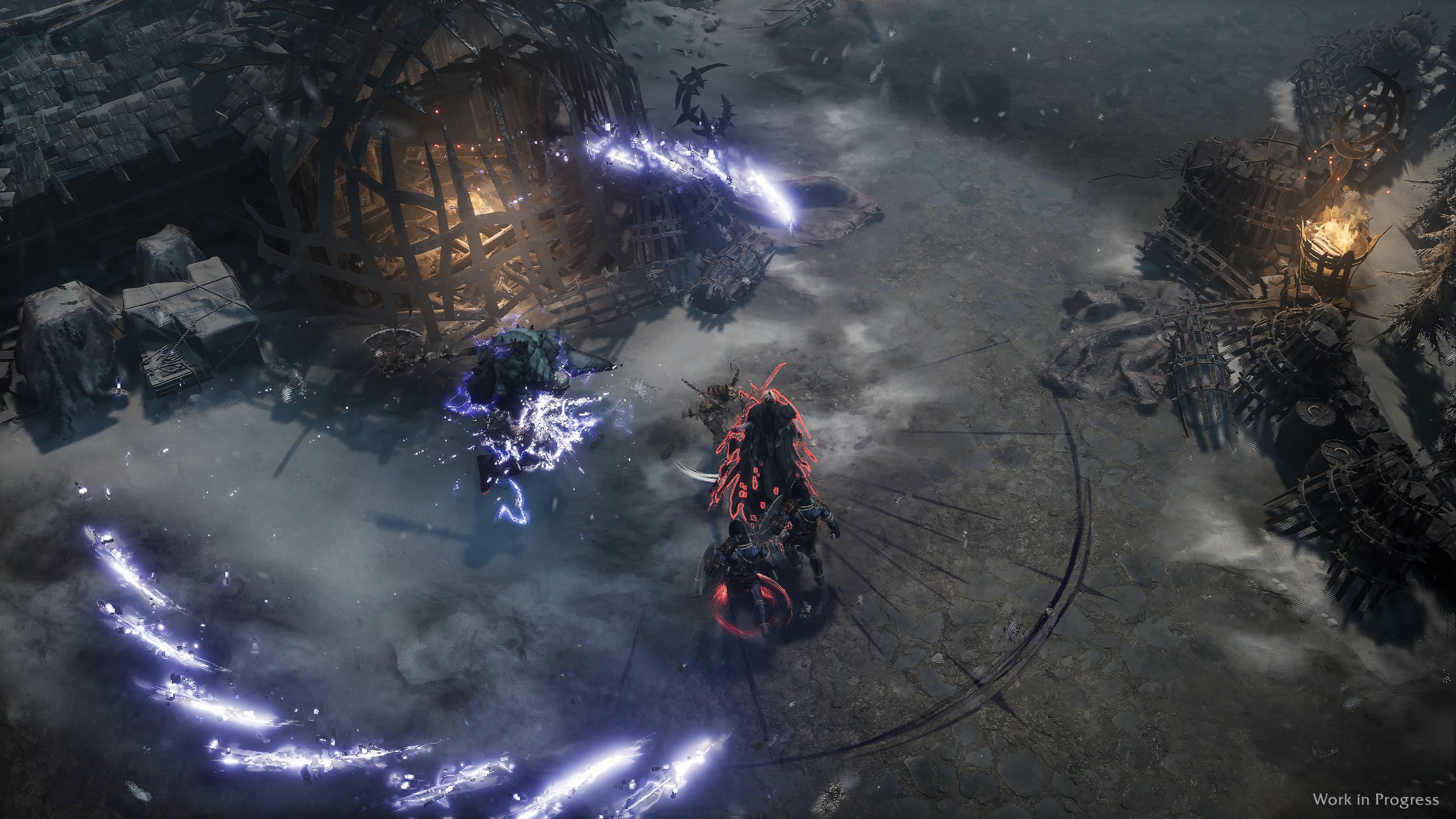
Can you talk about some of the mythologies?
Sure. In the Norse mythology world, we have a Viking village that is inhabited by the unworthy, the unworthy being the souls of people who died dishonorably. More specifically, they didn’t die in battle, bringing shame on themselves. We’re always trying to bring elements of the world that make it fantastical because these are mythological planes, they are not real life. We also want to explore various myths with each mythology. For example, there are camps home to the berserker faction. These berserkers have gone so far into animal powers that they’ve almost become the animals they were tapping into.
An important thing I want to point out is that while doing this in Unreal Engine 5, we knew that UE5 is really power hungry, so we tried to optimize everything and make it as efficient as possible so that we could achieve good performance on low-end graphics cards with 60 frames per second. Right now, we’re benchmarking against GeForce GTX 1650 GPUs.
I do hope that you can still enable some eye candy if you have a powerful PC!
Of course, of course, yes, you can go up in graphics with a strong PC.
How many players are going to be in one session of Project Pantheon?
We have smaller maps with six players and some larger ones with sixteen. We’ve tested with as many as forty players. The real thing here is that we need this community building so that we can properly test the game and see how the number of players influences its dynamics so we can fully make a decision. Right now, these are intended numbers.
We’re also going to have social features, like being able to add friends to a party. There is even a proximity chat so that players can maybe negotiate with one another as they’re playing. But those will be coming a bit later towards early access.
Is there trading in the game? If so, how does it work?
Yes, there is an in-game auction house like that seen in World of Warcraft. You don’t spend real money, just in-game money. You have to extract the goodies, and then you trade from your sanctuary.
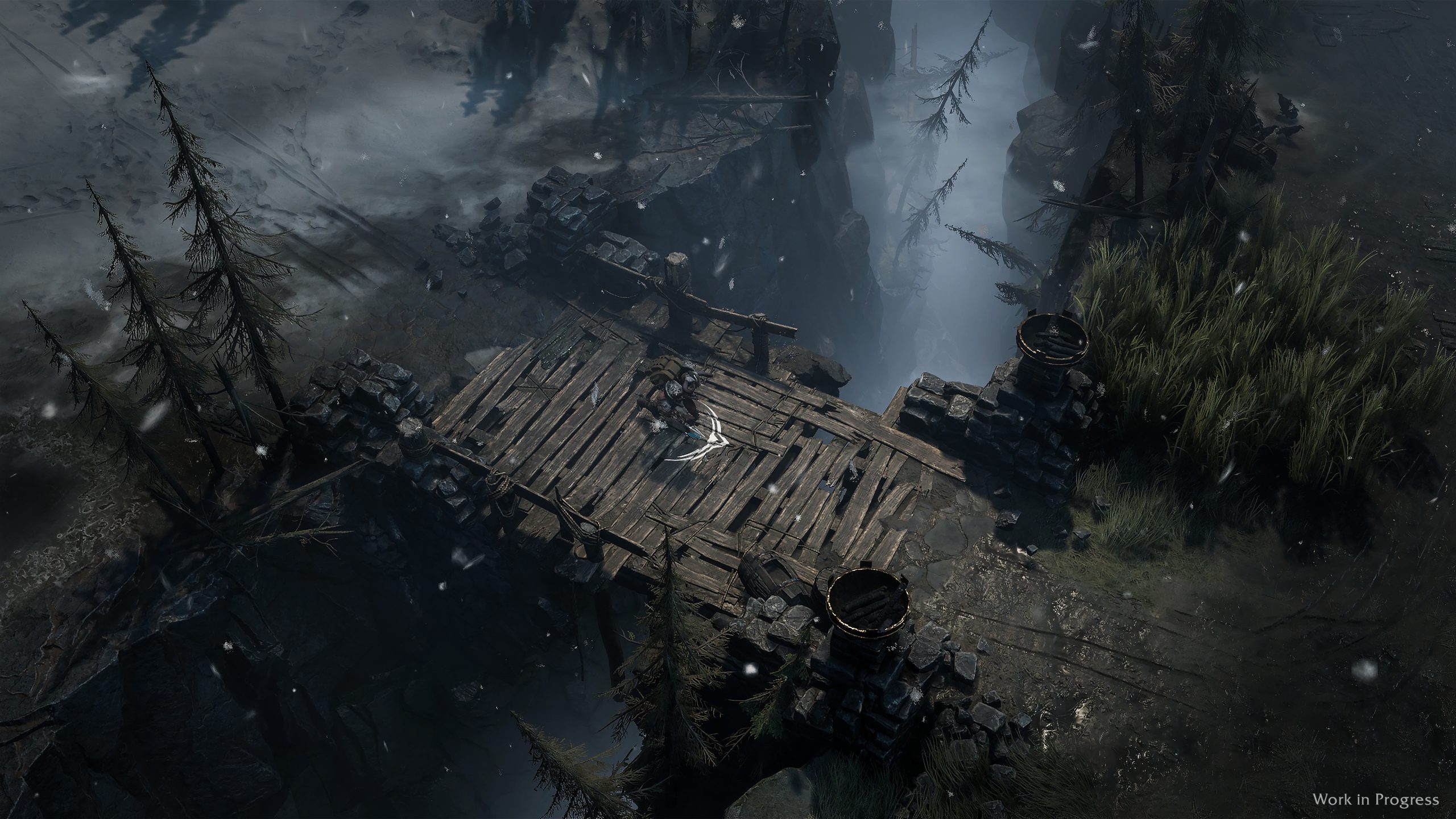
Well, Project Pantheon certainly looks interesting. I don’t believe there is an extraction action RPG yet, and the concept might have potential.
Actually, that’s how we started this endeavor, in a way. We found the extraction genre very intriguing, specifically because it’s like a Battle Royale where many players can win. But we also found that a lot of people, ourselves included, wanted to play an extraction game but not a shooter. All the currently available extraction games are shooters.
You’ve previously made the action RPG Wolcen. Is there anything in particular that you took from that game to this one?
For sure the classless part, and some learnings on the technical side. Wolcen was developed with some pretty old tech, which made it unsustainable in the long run. That is why when we built this new project from the ground up, we chose to go with things that we know can scale and work well, both in terms of an engine, backend system, server system, et cetera. The same learnings will apply to a future Wolcen game, but that is coming a little bit later down the line.
Thank you a lot for your time.
VIA: wccftech.com
A couple of projects I saw at Gamescom 20024 had their behind-closed-doors previews embargoed until a much later date, and one of them, a dark fantasy game called Project Pantheon, is now being revealed. It’s a blend of two highly popular genres: extraction and action RPGs. The latter is very familiar ground for the developer Wolcen Studio, a team known for the namesake game (formerly titled Umbra and crowdfunded via Kickstarter).
Powered by Unreal Engine 5 technology and targeting PC (there’s already a Steam page), Project Pantheon will soon enter public testing. A Closed Alpha Test is scheduled to take place on January 25-26 and February 1-2 for European and North American players, with servers that support other regions coming up in a few weeks.
At Gamescom, I met with Game Director Andrei Chirculete, who provided me with a thorough overview of the game and also answered several questions. Wolcen Studio currently has around 110 employees between France and Romania and they are working on three projects of various sizes. Project Pantheon is the one closest to release, with a targeted Q4 2025 early access launch window and the plan to employ a seasonal system with a new season coming roughly every four months. Find the transcription of our conversation below.
What was the original pitch for the game?
When we started working on this project, one of the most important things for us was building it as a live game. We will consider it successful if it’s still rather going strong in ten years from now on the market.
All the pillars we have here are in support of that. Right now, we’re working hard on the combat side. We want to get good, fluid combat, and then, of course, every feature and mechanic we are putting in the game needs to have replayability because we’re working on two fairly difficult genres. In both extraction and action RPGs, difficulty and progression systems are important to keep at the core of the game, and because we have a PvP component, we also need competitive systems. We have very strict anti-cheating stands. Last but not least, one big change for us as a company is that we are going forward with a community-driven development. When we started putting Project Pantheon together, the first thing we asked ourselves was, how do we make an MVP of this, put it in front of the community and start developing the game with that community?
What’s the world going to look like in Project Pantheon?
Instead of a classic fantasy setting, the game takes place in a post-apocalyptic universe where all the different mythologies coexist, but all the gods have been mysteriously wiped out. Death is our central character. He’s a cosmic entity that kind of picks up the pieces of a broken universe, and he recruits the players as his new Reapers. To get to the bottom of what happened, for one thing, but also helped him manage this situation, let’s say. Let’s have a look at that in the context of the extraction game. Death will give players a corner of his own universe as a base of operations, and that’s the safe space where players can try on different things. They have access to crafting and other functionalities.
Eventually, they can head out from there to different maps in different mythologies, such as Olympus, Valhalla, or something like that. The goal sgenerally will be to follow objectives, kill other players, and go through various PvE encounters (including some bosses), but ultimately, the goal is to survive and extract back into the sanctuary. If the players manage to do that, they get to keep everything they’ve accumulated along the way; if they don’t, they will lose what they’ve got, excluding the progression. The progression they get to keep, like, the quest progression.
The sanctuary is essentially a collection of buildings that you have to upgrade. Well, first, you have to build them, then operate them, and each one has a very distinct functionality attached. For example, storage space and crafting. There’s a playing area that allows the players to test their play style. There are also some passive bonuses, for example, when you respawn after dying, what kind of bonuses. There are even some aesthetic options, such as changing the lighting in your sanctuary. On the loop side, something we’re doing differently compared to traditional action RPGs is that we’ve moved a lot of what the playstyle means from the character to the gear that he is wearing.
You are what you wear. All the abilities, passive and active, come from the gear that the player is equipped with, and this feeds into a system related to the in-game economy, which we think is the secret sauce to extraction games. We believe you can’t really have a feeling of anxiety about losing an item or extracting with an item and being super happy about it unless that item actually holds value in the in-game economical model.
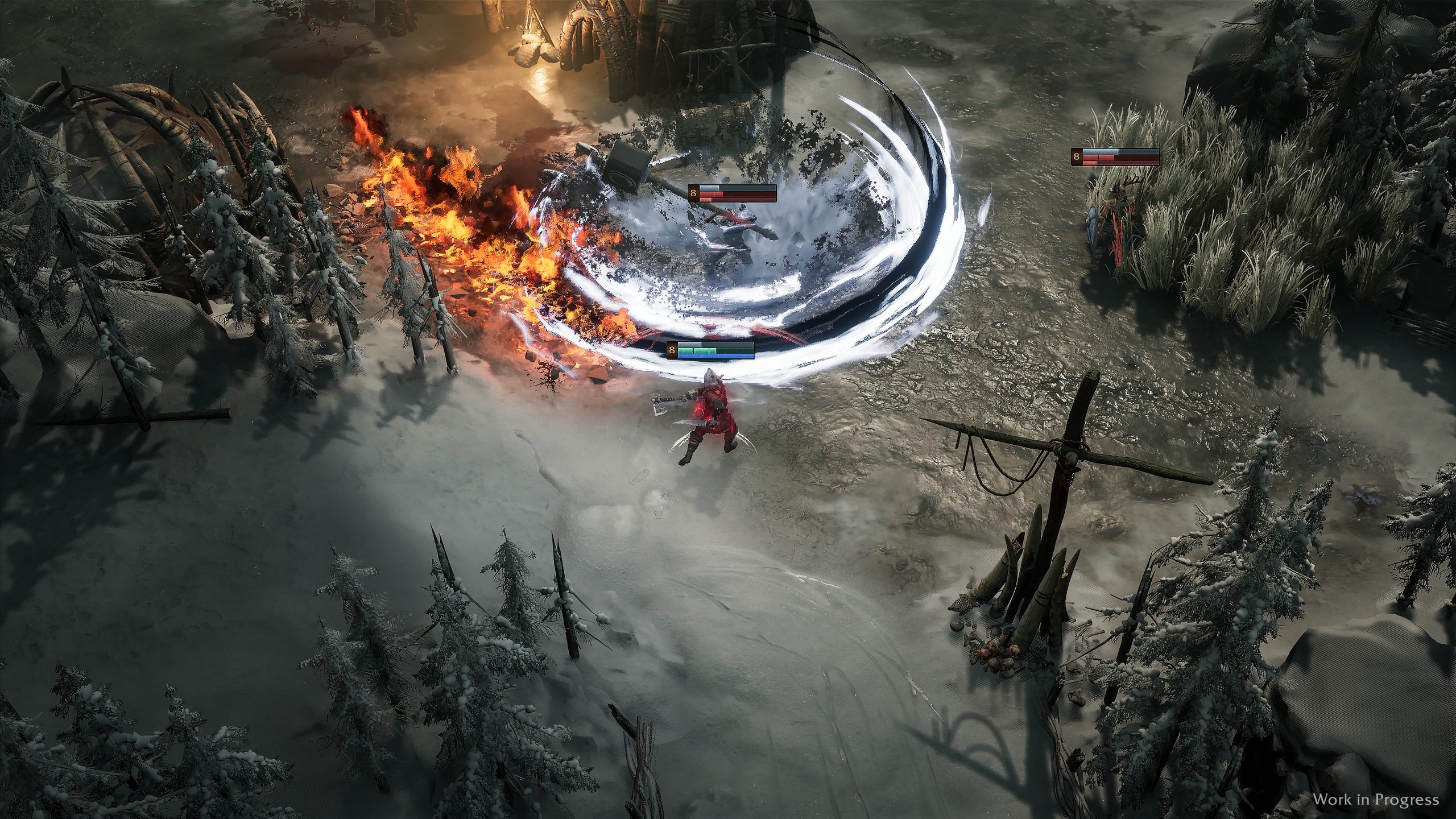
Can you talk about the art direction of Project Pantheon?
There are three main important pillars here: post-apocalyptic, grounded fantasy, and mythologies. On the post-apocalyptic side, we’re trying to build a fantasy post-apocalypse. Think Valhalla destroyed or Mount Olympus in ruins, not zombies or nuclear fallout or anything like that. On the grounded fantasy side, we are speaking to our roots with our fantasy, and we’re trying to really build everything by focusing on the logic of how the world ended up where it is. For each faction, we’re looking into how they reached a certain point, and of course, with each mythology, we’re looking at the technology level, what they would have access to in terms of armor, weaponry and so on.
On the mythology side of things, we’re going to start with Norse and Egyptian for early access and then adding Greek and Aztec throughout the early access. We will add more mythologies post-launch. Each mythology has several maps, about three, each with a unique boss attached to them. Each mythology also brings its own storyline and between fifty and sixty quests. Of course, some new, unique characters are introduced with each one.
There are between five and six factions for mythology, and then we have the items, which in my mind are the most important ones because we introduce about a hundred new items into Project Pantheon with each mythology, bringing more than a hundred abilities for the players to play with.
How important is customization going to be?
A lot. The sanctuary will be fully customizable. The playable character, of course, as well as stuff like armor and weapons.

What does monetization look like in the game?
We’re building it as a free-to-play live service. First, we want to reach as wide an audience as possible, and more importantly, we want to avoid any kind of pay-to-win mechanics. That’s why we’re looking at customization options and selling them through traditional means like season passes and starter packs rather than selling any kind of advantage in the game.
We’re also investigating the subscription model. Take as an example Dota Plus, which gives players access to a bit of analytics about their own gameplay style without actually providing them with any kind of advantage.
Did you do some internal and external playtesting yet?
In terms of market validation, we conducted a couple of external playtests to figure out if we’re not crazy and that this game mode actually has some fans. We started out with North America and Europe, and we’ve done South Korean and a Southeast Asian playtest. In each case, we’ve had great results, with players engaged with the two in-game loops, albeit in different ways. The Western audience was more focused on the action RPG elements, whereas the Asian audience was more focused on the competitive side of things. That just reflects the different markets.
Where are you when it comes to progress?
We started this in February 2023 by conceptualizing the whole game. We then built a prototype until October 2023 and used that prototype for the market validation I was talking about earlier. Then we began production in April 2024. Now, we intend to have a cadence of at least two Closed Alpha tests every two months until we release the game on early access. The reasoning behind this is because of that pillar of community-driven development. We want to start forming that community.

Is the map randomly generated in any way?
Originally, we tested having the map be randomly generated, and what we discovered was that extraction as a game mode lends itself to player knowledge. As a player, you want to gain knowledge and learn the map so that you can be efficient when you venture into a session. The randomly generated maps simply didn’t work very well, so we reverted to doing more traditional maps and then figuring out what elements we could randomize. For example, extraction spots are randomized.
There are some dungeons which sometimes might be there, sometimes might not. So we still have some randomization going on while you’re playing Project Pantheon, but yeah, as you’re going through it, you’re gonna encounter some PvE combat.
Eventually, after going through the monsters, you’re going to potentially run into some people. This obviously has a couple of choices. You can choose to stay and fight or just run away. We’ve seen all sorts of behaviors. The reason we like the extraction loop and why we chose it is because, unlike in the Battle Royale genre, this is a mode in which all the players can be winners. You can have multiple winners. Players could go in and fight it out, if they feel like it, but they don’t have to in order to reach their objectives.
We also believe strongly that there’s a lot of variety in playstyle with this type of game. You will have players who go in very fast, enter the map, get the job done and get out. You will have others who cherrypick everything. There’s no right way to play, we just want to give everyone the tools to play however they prefer. Some players are just going to stand by an extraction point and wait for players to go extract so that they can steal everything that they’ve got.
Is the amount of active skills finalized yet?
There are six active skills. We’ve made the weapon more impactful in the build, so your abilities are going to come from the weapon that you’re using. You also have a defensive option that comes from your boots, which will either provide you with a shield, a dash, or some other kind of defensive mechanic. We also have a special slot for an artifact item that gives you your ultimate ability. As I said earlier, the gear itself provides you with what you have as a playstyle. The armor also provides you with some passive abilities.
How does the extraction work in Project Pantheon?
You have to find one of these obelisks that spawn dynamically on the map, charge it up for a while, and then hold your ground type of situation.

Can you talk about some of the mythologies?
Sure. In the Norse mythology world, we have a Viking village that is inhabited by the unworthy, the unworthy being the souls of people who died dishonorably. More specifically, they didn’t die in battle, bringing shame on themselves. We’re always trying to bring elements of the world that make it fantastical because these are mythological planes, they are not real life. We also want to explore various myths with each mythology. For example, there are camps home to the berserker faction. These berserkers have gone so far into animal powers that they’ve almost become the animals they were tapping into.
An important thing I want to point out is that while doing this in Unreal Engine 5, we knew that UE5 is really power hungry, so we tried to optimize everything and make it as efficient as possible so that we could achieve good performance on low-end graphics cards with 60 frames per second. Right now, we’re benchmarking against GeForce GTX 1650 GPUs.
I do hope that you can still enable some eye candy if you have a powerful PC!
Of course, of course, yes, you can go up in graphics with a strong PC.
How many players are going to be in one session of Project Pantheon?
We have smaller maps with six players and some larger ones with sixteen. We’ve tested with as many as forty players. The real thing here is that we need this community building so that we can properly test the game and see how the number of players influences its dynamics so we can fully make a decision. Right now, these are intended numbers.
We’re also going to have social features, like being able to add friends to a party. There is even a proximity chat so that players can maybe negotiate with one another as they’re playing. But those will be coming a bit later towards early access.
Is there trading in the game? If so, how does it work?
Yes, there is an in-game auction house like that seen in World of Warcraft. You don’t spend real money, just in-game money. You have to extract the goodies, and then you trade from your sanctuary.

Well, Project Pantheon certainly looks interesting. I don’t believe there is an extraction action RPG yet, and the concept might have potential.
Actually, that’s how we started this endeavor, in a way. We found the extraction genre very intriguing, specifically because it’s like a Battle Royale where many players can win. But we also found that a lot of people, ourselves included, wanted to play an extraction game but not a shooter. All the currently available extraction games are shooters.
You’ve previously made the action RPG Wolcen. Is there anything in particular that you took from that game to this one?
For sure the classless part, and some learnings on the technical side. Wolcen was developed with some pretty old tech, which made it unsustainable in the long run. That is why when we built this new project from the ground up, we chose to go with things that we know can scale and work well, both in terms of an engine, backend system, server system, et cetera. The same learnings will apply to a future Wolcen game, but that is coming a little bit later down the line.
Thank you a lot for your time.
VIA: Πηγή Άρθρου
Greek Live Channels Όλα τα Ελληνικά κανάλια: Βρίσκεστε μακριά από το σπίτι ή δεν έχετε πρόσβαση σε τηλεόραση; Το IPTV σας επιτρέπει να παρακολουθείτε όλα τα Ελληνικά κανάλια και άλλο περιεχόμενο από οποιαδήποτε συσκευή συνδεδεμένη στο διαδίκτυο. Αν θες πρόσβαση σε όλα τα Ελληνικά κανάλια Πατήστε Εδώ
Ακολουθήστε το TechFreak.GR στο Google News για να μάθετε πρώτοι όλες τις ειδήσεις τεχνολογίας.


